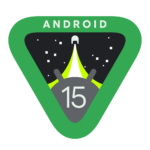This Valentine’s Day, take a lesson from Cupid; he knows a thing or two about targeting. A person reached by his arrow and its sharp golden point is filled with uncontrollable desire. Cupid even sports wings because lovers (like coveted mobile users) are flighty and likely to change their minds. Armed with tools of the trade and clear on his targets, agile Cupid is ready to convert mere subjects into loyal, love-struck devotees.
With so many brilliant apps available, and competition for new users increasing, it’s time for developers to grab an arrow, strap on some proverbial wings and fully leverage the targeting strategies available to them. Without further ado, I offer this overview to help developers become sharpshooters and target appropriately to attract the right audience and drive more downloads.
A broad, fundamental targeting strategy helps reach your desired audience, keeps your marketing relevant to users, and works well on a basic level. Tried-and-true targeting abilities include:
• Device—target the platforms where your app is available
• Carrier—different carriers appeal to various demographics
• Geo-location—consider languages, local relevance, special offers, weather-related content, etc.
• Demographics—consider age, income, education, etc.
• Context—consider special interests and app environments
Keep in mind that how you target will impact the amount of people you will reach. The broader your approach, the more users you are likely to reach, although quantity does not always equate to quality. On the flip side, more specific targeting has the potential to bring down scale since the more parameters you set, the narrower the potential audience may become.
Beyond the broad, fundamental targeting options, there are additional strategies to consider when trying to connect with users.
Retargeting. Essentially, you are targeting based on a user’s suspected interest in your app. Don’t assume that users who have clicked but not downloaded are uninterested. Go ahead and target the “clickers.” The truth is that users may click on an ad many times before they download. These “clickers” are actually prime candidates for conversion. To avoid fatigue from users who have seen your ad too many times, try using a rotation of different formats to keep their interest fresh and prevent them from becoming desensitized to your ad.
Target based on similar interest. Target users who have downloaded similar apps to yours. For example, if you’re a developer with a racing game app, try targeting other racing game users by referencing their passion for the sport. “Collect more racing apps with (insert your app here).”
Appeal to brand affinity. If applicable, try targeting users based on loyalty to a specific brand. For those who show past downloads from their favorite publisher, it will be enticing to see a call to action that their favorite brand launched a new app, and they can be the first to play!
Look-alike modeling. Consider targeting based on users’ interests such as pets, fashion, nightlife, sports, travel, music, even food; consider purchase history as well. There are a multitude of factors and interests to choose from, and identifying specific interests or patterns requires an ad network with plenty of data (as well as third-party data). Be careful and ask your ad network for help to ensure the accuracy of your conclusions if using this approach.
Negative targeting/efficiency. Simply put, don’t serve ads to those who already have your app installed. Instead, show the ad to the people who don’t have it installed. Doing so saves any unwanted or unnecessary clicks. Users will have a better experience because they won’t be exposed to an ad for an app they already have.
Before you set out on a targeting strategy, discuss the options with your acquisition partner. Do ask for guidance, discuss the most advantageous approach to combining targeting parameters, and address how to track performance for each of the various methods.
Good luck, and may all the users you seek fall under your spell.
Dale Carr is CEO of LeadBolt, a mobile company that drives monetization and app discovery.





